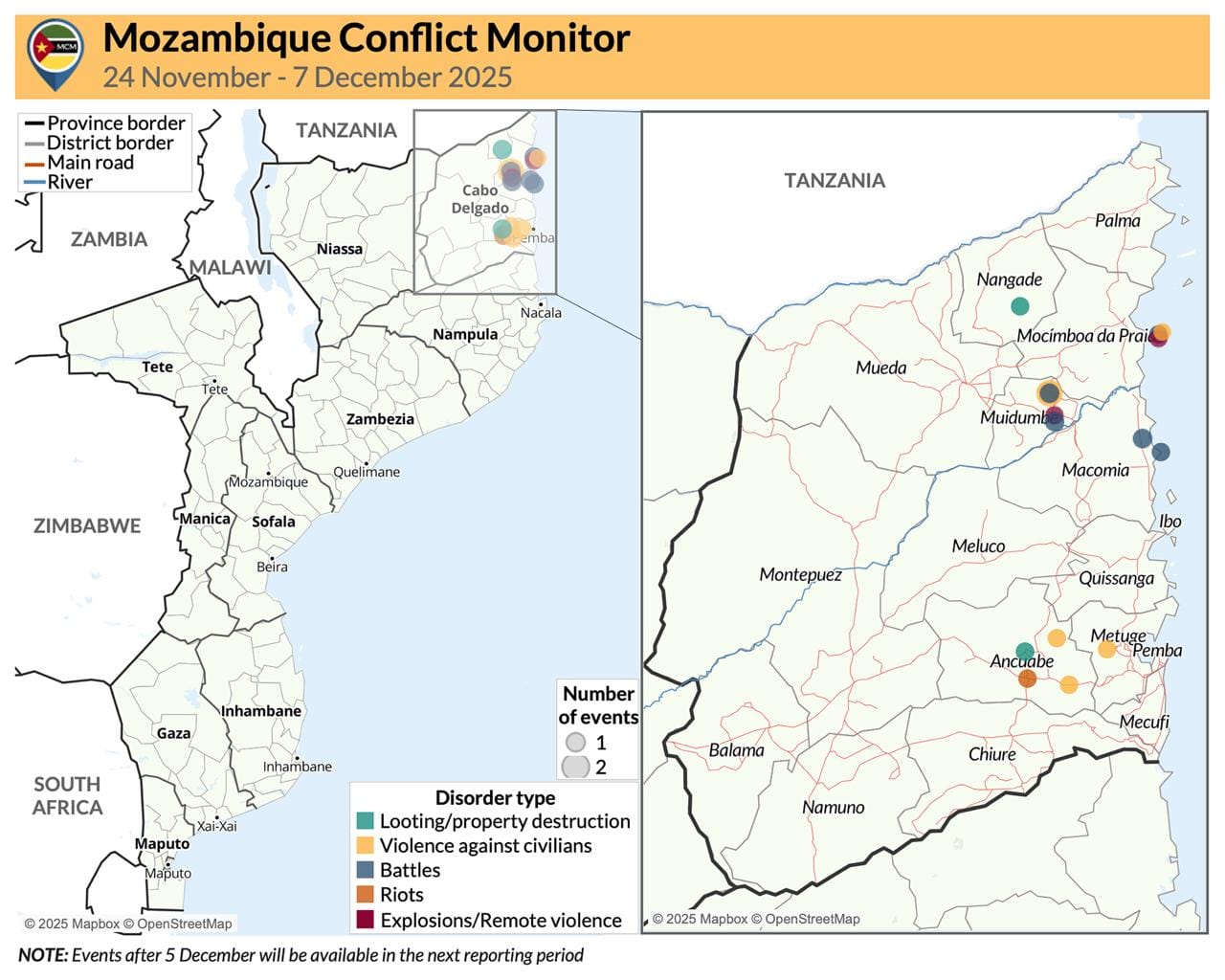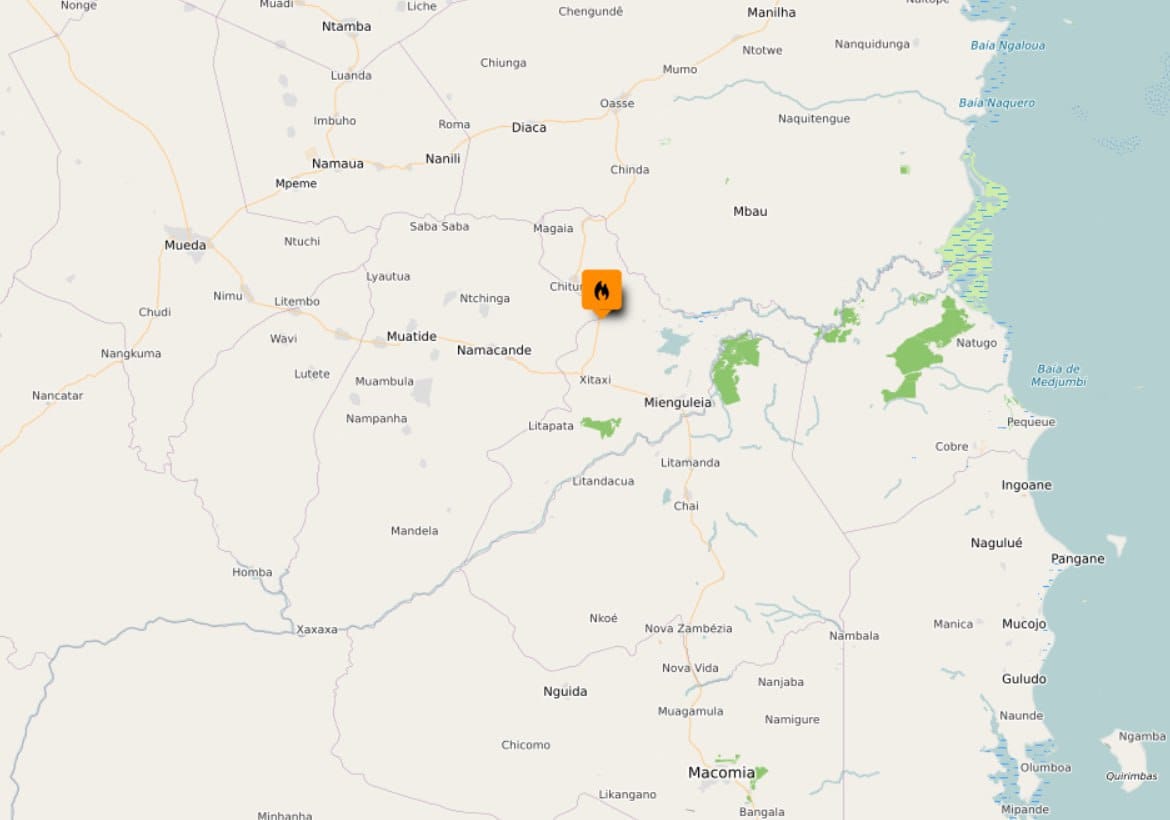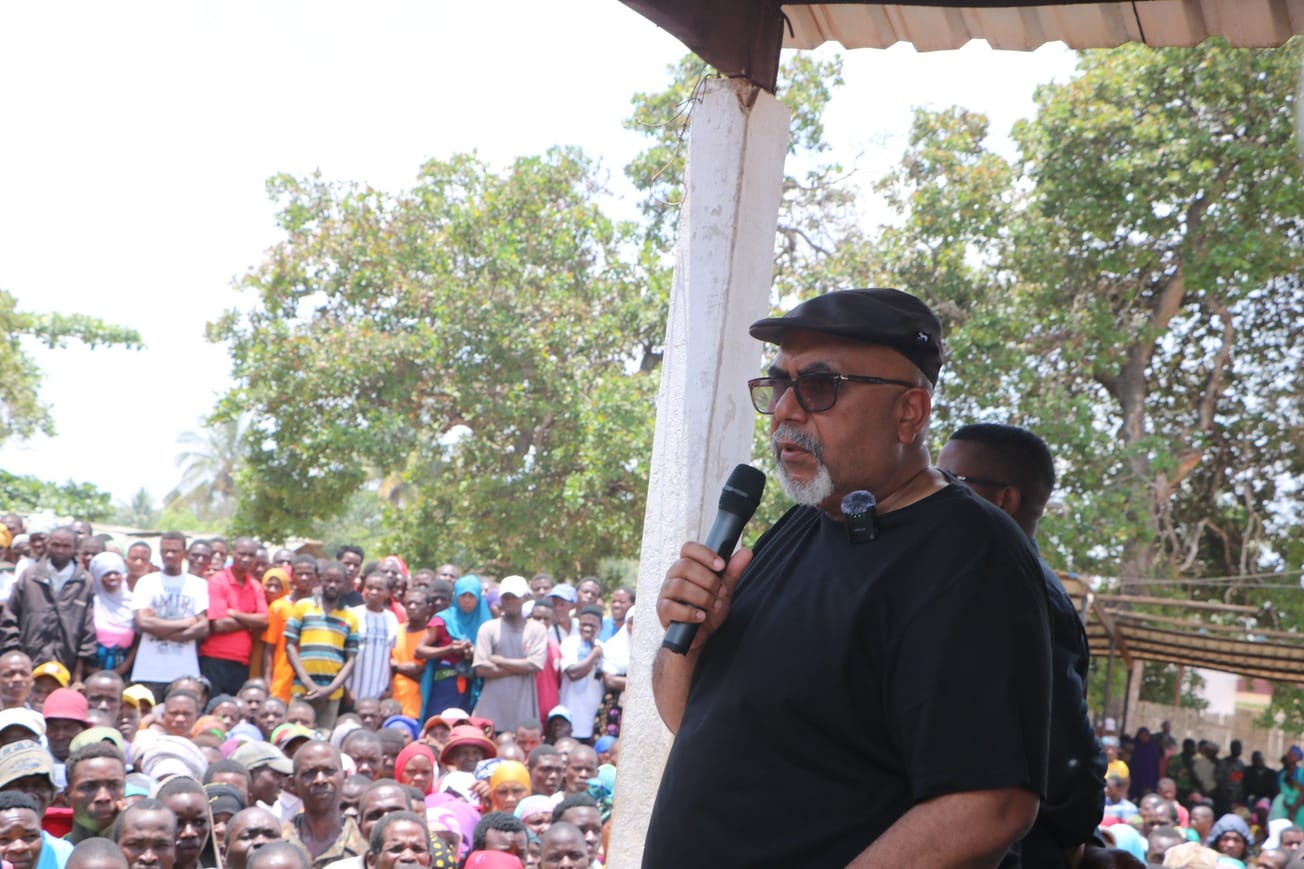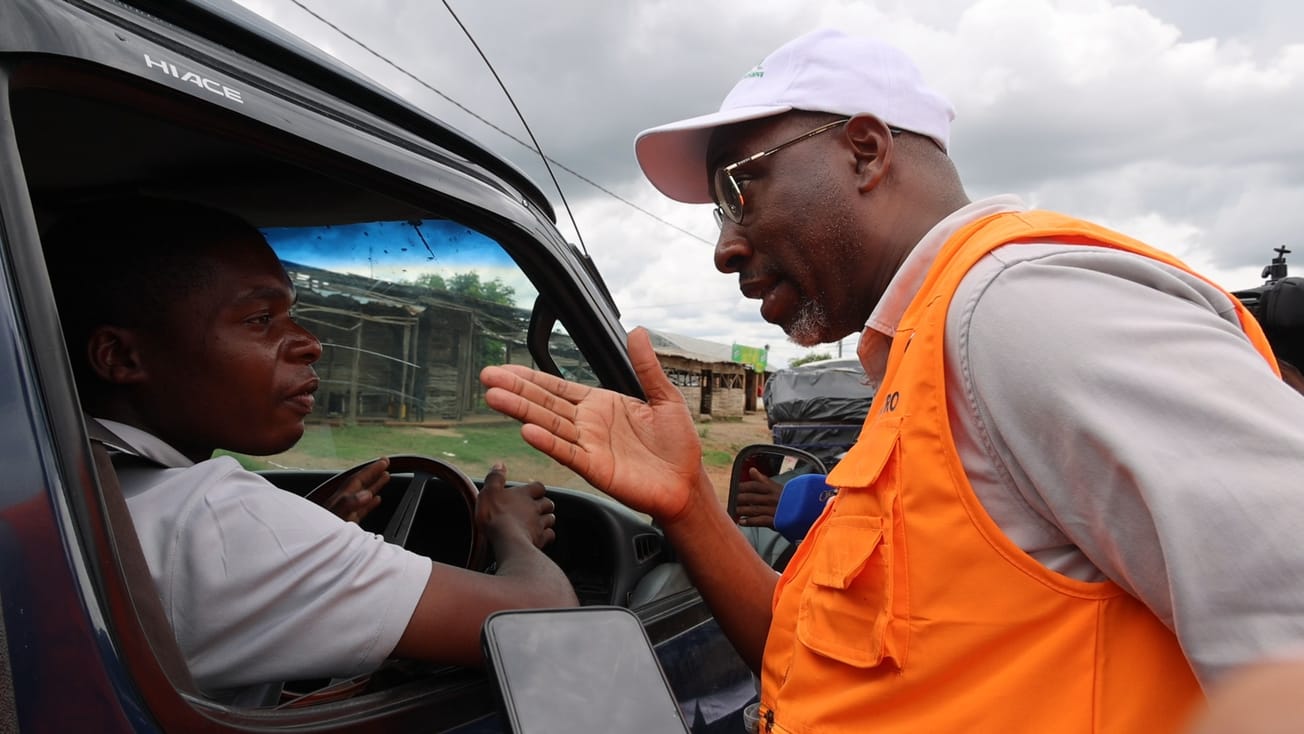By the numbers
Data highlights in Cabo Delgado province (14 July - 3 August 2025)
- At least 14 political violence events (2,142 in total since 1 October 2017)
- At least 28 reported fatalities from political violence (6,151 since 1 October 2017)
- At least 11 reported civilian fatalities (2,542 since 1 October 2017)
- At least 13 political violence events involving ISM across Mozambique (1,969 since 1 October 2017)
Overview
Starting around 15 July, Islamic State Mozambique (ISM) fighters moved south out of Macomia, through Quissanga and Ancuabe districts and into Chiúre district. They met resistance only from Naparama militiamen, at least 14 of whom they killed. The operation displaced almost 50,000 people in seven days in Chiúre district. Continued movements and attacks by ISM in the north of the province indicate that the move to Chiúre was tactical rather than in flight. As well as stretching the Mozambican military, a sustained propaganda campaign linked to the operation kept ISM in the public eye as a force in northern Mozambique.
ISM moves south
On 15 July, a group of approximately 60 fighters was seen moving across the road that links Macomia town to the coast. Judging from reports from local sources as well as the Islamic State (IS) weekly al-Naba, the fighters made their way south to Quissanga before dividing in two and moving into Ancuabe district. Al-Naba highlighted preaching sessions ISM conducted in villages during this time, reflecting its generally non-aggressive, though intimidating, posture toward communities in Macomia and Quissanga districts.
ISM’s first attack during this operation was on Nanduli village in Ancuabe district on 20 July, where local sources reported they burned houses and looted property. IS claimed the attack two days later. According to the International Organization for Migration (IOM), almost 2,000 people fled this attack.
The next attack was on 22 July near Nathocua village, also in Ancuabe district, and almost 20 kilometers south of Nanduli. According to local sources, at least six civilians were killed in fields near the village. The group’s subsequent movements are unclear, until their arrival at Chiúre-Velho on 24 July, where they attacked a police station and freed one insurgent who was in detention there. A clip IS released under the Amaq News Agency brand indicates that fighters faced no resistance, suggesting that police fled before they arrived.
ISM remained in Chiúre for at least the following seven days, displacing tens of thousands. According to IOM, almost 52,000 people fled ISM attacks in the district, mainly in villages on either side of the N1 between Chiúre and the crossing to Nampula at the Lurío river. To the east of the road, ISM undertook at least five attacks, during which they reportedly killed at least four civilians and abducted three, as well as destroying property. Villages affected included Ntonhane, Cinco, Kimila, Mareira and Maririni.
A more complicated scenario developed to the west of the N1. Around 27 July, youth from the Ocua, Namogelia, and Catapua areas mobilized as a Naparama militia. By the following night, ISM had killed at least 14 of them in Melija village, according to a photo report released by IS. The next day, 29 July, Naparama youth killed two undercover police officers at Nivenevene village who they suspected to be ISM.
There have been no reports of attacks in Chiúre since 31 July. Local sources say insurgents tried to cross the Lúrio river to Nampula province but were unsuccessful. On 3 August, Defense Armed Forces of Mozambique (FADM) reinforcements arrived in Chiúre district headquarters, by which time ISM appeared to have left the area. Two sources indicated that they moved westward toward Namuno and Montepuez.
Attacks continue in the north
While some forces have moved south, ISM maintained a presence on the Macomia coast in recent weeks. The group appeared in Pangane village on 17 July, when they took fuel for a boat engine, and again on 29 July, according to sources in the area. On 25 July, the group successfully deployed an IED just north of Mucojo town, damaging a FADM vehicle. According to a source, ISM warned the local community beforehand not to use that stretch of road. Four days later, the group entered Manica village, just three km west of Mucojo on the Macomia road. According to a source, they were interested in learning of the movements of soldiers stationed near Manica. On the same day, 29 July, Rwandan forces captured two ISM members at an abandoned hotel by the beach near Mucojo.
Further up the coast, north of Mocímboa da Praia town, local sources reported that insurgents arrived at Nkomangano village on 1 August, taking two boats and their crews for ransom. Inland, a young armed male insurgent and a young woman in advanced pregnancy handed themselves in to the authorities on 22 July.
ISM also remains active farther west. On 23 July, the group attacked Magaia village in northern Muidumbe district, killing at least three members of the Local Force. The group remains in the area. IS issued a claim for the killing of a man in the area on 3 August.
Business pressure keeps the N380 open
After the Mueda branch of the Confederation of Economic Associations (CTA) wrote to local government to complain about ISM activity on the N380, saying it impeded trade, military escorts have been reintroduced on the N380. This follows a meeting between business leaders and Cabo Delgado Governor Valige Tauabo on 22 July. Though one source indicated that road blocks were planned the week before the meeting, there have been none since 12 July.
Focus: Southern thrust meets little resistance
ISM’s push into Ancuabe and Chiúre districts in late July is its fourth foray to the south of Cabo Delgado province since the start of 2024. July’s advance, like previous ones, met no resistance from state forces, and only token resistance from militias, a failure recognized by Minister for National Defense Cristóvão Chume. As with ISM’s previous campaigns, attacks on civilians and a strong propaganda campaign featuring attacks on Christian targets characterized the operation.
ISM’s push toward Chiúre, and its ability to remain there for at least seven days, is surprising given that FADM’s Macarara camp, and the nearby Rwandan military camp, are just 50 km from Chiúre district headquarters by road in Ancuabe district. FADM reinforcements did not arrive until 3 August. For FADM, this may illustrate just how stretched their forces and logistical support are in northern Mozambique. Given that this is the fourth incursion in 18 months, Chiúre residents’ faith in the state’s ability to protect them must be sorely tested.
As well as the obvious strain on the security forces, the displacement that ISM deliberately causes also puts huge pressure on local administration. UN OCHA notes that 60 schools have been closed across the district, while schools in Chiúre town are overwhelmed by displaced people seeking shelter. Doctors Without Borders has pointed to the inevitable increase in infectious diseases under the precarious conditions in the camps.
ISM’s push south was accompanied by an intense online propaganda campaign. Through its Telegram channels, IS published 13 claims for attacks in Ancuabe and Chiúre districts between 22 July and 3 August, as well as a video package of the attack on the Chiúre-Velho police station. The operation also featured prominently in al-Naba for two consecutive weeks.
IS propaganda stressed ISM’s differing posture in predominantly Muslim and predominantly Christian communities. In Quissanga and Macomia, images released on Telegram and in al-Naba showed ISM figures lecturing people in their villages. In contrast, images from Ancuabe and Chíure showed destruction of villages and brutal killings. Whether this has an impact on inter-communal relations remains to be seen.
As with previous moves south, this came in the wake of heightened state forces operations in northern districts. However, given that ISM maintained a presence in the north while dispatching a group south indicates it was likely a tactical move to stretch state forces, rather than flight from operations against the insurgents.
Roundup
Suleimani Nguvu tagged as ISM communications chief
Intelligence available to the United Nations Security Council’s sanctions monitoring team, published in its 24 July report on IS and al-Qaeda, says that ISM’s strategic communications are now run by Suleimani Nguvu, a Tanzanian who has been in the leadership since January 2025. As the likely interlocutor with IS media operations, he is now a key figure in the group. The Security Council report notes that the leadership otherwise remains the same, as outlined in its February report: Ulanga, also Tanzanian, and Faridi Suleiman Harune. The report notes continued links with the Democratic Republic of Congo, from where it says the group has received a recent influx of recruits.
President Chapo reshuffles military leadership
Mozambican President Daniel Chapo promoted several FADM officers on 28 July, including Major-General Messias André Niposso, a former Renamo officer. Niposso was promoted to lieutenant-general and deputy chief of staff, replacing Bertolino Capitine. Capitine was dismissed by former President Filipe Nyusi in September 2024 for criticizing the government’s approach to counter-insurgency in Cabo Delgado. Niposso’s appointment upholds the tradition, established in the post-1992 peace agreement, of balancing the FADM leadership between former government and Renamo officers.
Chapo also promoted Major General André Mahunguane to army commander, replacing Tiago Nampele, who was appointed commander of the Mozambican Civic Service. These changes conclude a military reshuffle that began in April with the appointment of Júlio Jane as FADM’s chief of staff, replacing Joaquim Mangrasse.
Venâncio Mondlane faces five charges over post-election protests
Former presidential candidate Venâncio Mondlane announced on 22 July that Mozambique’s Public Prosecutor’s Office had formally charged him with five crimes related to protests following the 2024 general elections. Mondlane made this announcement after a hearing at the Office of the Attorney General in Maputo. The charges include public advocacy of crime, incitement to collective disobedience, public instigation of a crime, instigation of terrorism, and incitement to terrorism. These charges conclude the preparatory investigation phase, and proceedings will now move forward to trial. Mondlane claims that the judicial process is linked to his allegations of significant electoral fraud, which he says were confirmed by international observers.
Strengthened cooperation with Russia
Foreign Minister Maria Lucas met her Russian counterpart, Sergei Lavrov, in Moscow on 22 July. In a statement, Lavrov said Russia would welcome requests to strengthen “defence and counter-terrorism capabilities.” Since the departure of the Wagner Group in 2020, such cooperation has been limited. However, Zitamar News reports that President Chapo is keen to strengthen relations with Russia and is thought to be planning a visit to Moscow.








